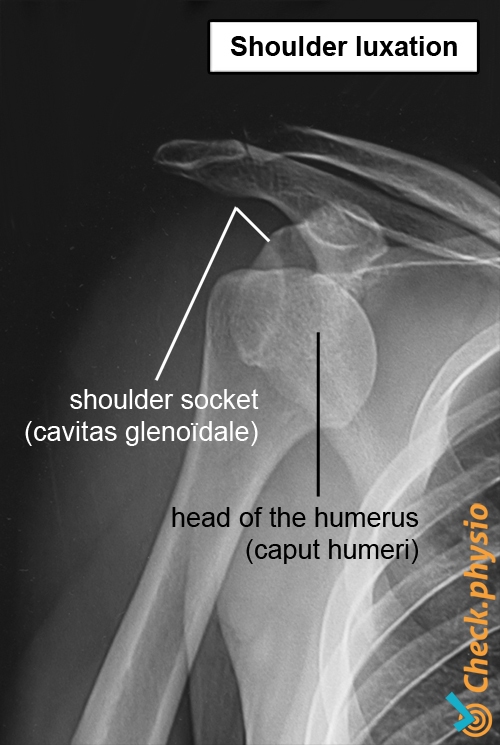- Conditions
- Shoulder subluxation
Shoulder subluxation Glenohumeral subluxation / partially dislocated shoulder
Introduction
The medical term for a partially dislocated shoulder is "shoulder subluxation". This is usually caused by a fall onto an outstretched elbow or hand. The result is a very painful shoulder that can barely move.
Generally, shoulder dislocations occur after traumatic events (e.g. falls, sports collisions or car accidents).

Description of condition
The shoulder consists of a ball and socket, among other structures. Contrary to what you might expect, the shoulder socket is actually only a very small socket in relation to the much larger humeral head (the upper arm bone). This gives us great mobility of the shoulder, but also makes the joint unstable. This instability is largely compensated by the muscles in the shoulder, and to a lesser extent the ligaments located around the joint.
When a shoulder subluxation occurs, the humeral head shifts away from the socket, causing loss of all function of the joint. This can also cause damage to ligaments and capsules, because the humeral head moves further than the surrounding structures can accommodate.
In 95 % of cases, the humeral head subluxes from the socket in a forward direction. This often causes damage to the leading edge of the ring of cartilage located around the edge of the socket (the labrum). A posterior shoulder subluxation is much less common and is often missed.
Cause and history
A shoulder subluxation is usually the result of an accident or fall. If a person tries to break the fall by stretching out an arm, the forces on the shoulder can be so great that the shoulder subluxes.
It may also be caused by a significant muscle contraction as a result of an electric shock or convulsion (seizure).
Signs & symptoms
The patient experiences severe pain and hardly dares to move the arm. The shoulder muscles tense up as a reflex action, to stabilize the joint. As the humeral head has shifted, a clear protrusion is often visible on the outside of the shoulder. The head can be felt in a different position to normal (protrusion), usually along the front of the shoulder.
Shoulder subluxation can cause instability of the shoulder.
Diagnosis
If a subluxed shoulder is suspected, further X-ray examinations will be performed. An X-ray can reveal the direction of subluxation and may potentially also rule out further injury such as bone breaks, muscle tears or damage to the joint capsule.
Treatment and recovery
The humeral head must be brought back to its original position in order to prevent any further damage to structures. Depending on the situation, this will be performed with the aid of muscle relaxants and analgesia. General anesthetic may be considered for a subluxation that has existed for a lengthy period.
More info
You can check your symptoms using the online physiotherapy check or make an appointment with a physiotherapy practice in your locality.
References
Verhaar, J.A.N. & Linden, A.J. van der (2005) Orthopedie Houten: Bohn Stafleu van Loghum.
Slaa, R.L. te, Bron, C., Hollander, H. den, Willems, W.J., Rutten, M.J., Winter, Th.C., Alsemgeest, M.A.M., Winters, J.C. & Rosier, P.F.W.M. (2005) Acute primaire schouderluxatie: diagnostiek en behandeling. Landelijke multidisciplinaire richtlijn Alphen aan den Rijn: Van Zuiden Communications BV.

